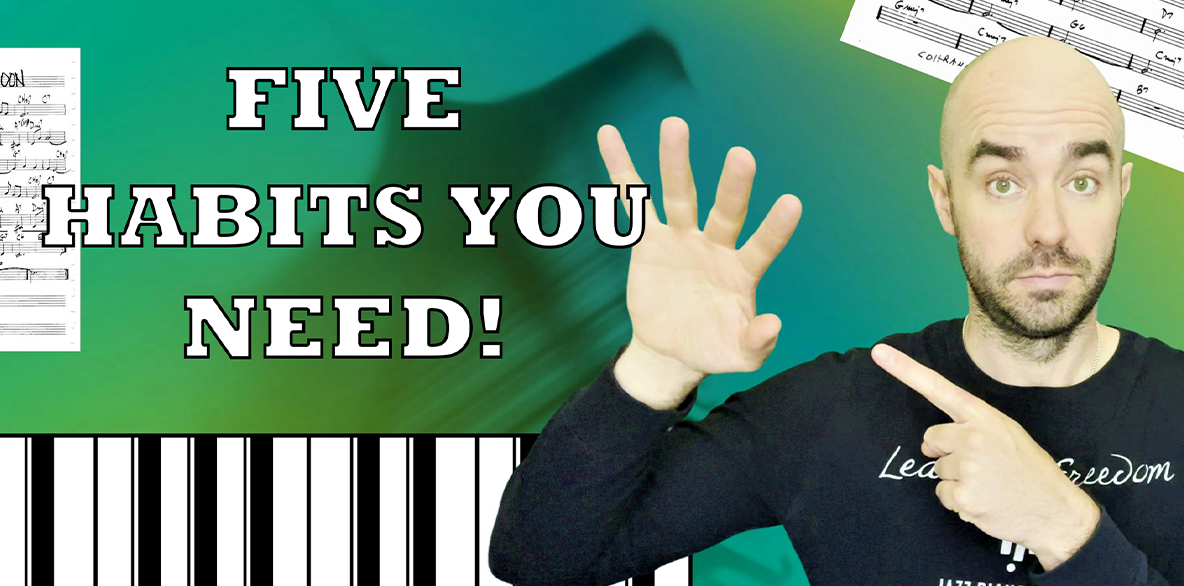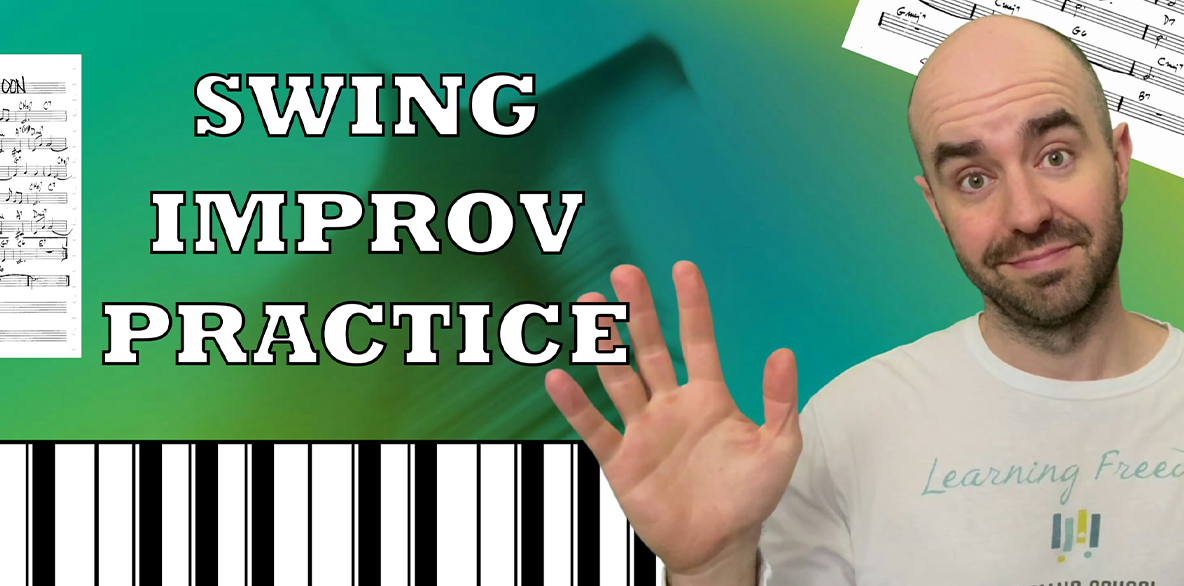Part I: Understanding What “Modern” Improv Is
First, let’s take a broad look at where improvisation started, and how we’ve ended up where we are today.
Many people are unaware of the fact that improvisation began long before jazz ever existed. There was a time when the great composers could sit at the piano and improvise fugues and inventions on the spot; and they did, oftentimes in public. Have you ever used the term “cutting session”? We jazzers use it when we’re talking about two musicians going head to head in a live, improvised battle. There are stories of a time when Mozart and his rival Clementi were put head to head to do the same. They had a cutting session of classical improvisation, composing on the spot for a crowd of people, each trying to prove himself the greater composer.
The art of improvisation has changed immensely since jazz first came into existence. What we refer to as “modern improv” today is arguably a completely new form of improvisation. Improvisation began as a talkative medium— people would improvise the blues with lyrics as a way of venting their worries, anxieties and expressing themselves. It was therefore not only talkative but also quite lyrical and melodic. The great Louis Armstrong, sometimes referred to as the father of jazz (though this is debatable) is one of the greatest melodicists of all time.
The bebop era ushered in a new approach to improvisation. Chromaticism led to complex linear melodies, much like the melody lines to bebop songs like “Confirmation,” or “Donna Lee.” Improvisation became more technical, and the greatest bebop players were admired for their ability to navigate chord changes quickly with ease. Another change began to take shape: jazz began transitioning from being purely a popular genre of music to becoming an art form, much like it is today.
It is therefore important to understand that improvisation originated at a time when jazz was the popular music of its day. Today, jazz is far from popular, but it is valued for the incredible artistry of those who create it. The goal of a modern improviser is usually very different from an early improviser: he or she must work hard to become a master of his or her art. With that said, improvisation is now highly technical. We have to master melodicism, chromaticism, and bebop before we can even begin modern improvisation techniques.
Part II: Modern Improv Techniques
Speaking of modern improvisation techniques, let’s take a look at some different categories that will take your improvisation to the next level. Let’s go over some of the core methodologies when it comes to modern improv. Here, we’ll provide you with some great sources for learning them.
Pentatonics:
One of the greats examples of a musician using pentatonic improvisation was the great McCoy Tyner. He found ways of navigating through changes while practically ignoring the chromaticism of bebop. This is exceedingly interesting, as there are now many different techniques for learning and practicing the pentatonic approach to improvisation.
Chad Lefkowitz-Brown, one of the best established modern saxophonists on the scene today, has provided a few excellent lessons on his YouTube channel. In the following lesson, he provides a primer to the pentatonic scale and some quick tips for making it sound modern, hip and “slick.” In this video, he also discusses common tones and pentatonic shifting, which are essentially ways of connecting and moving between different tonalities seamlessly in the course of your improvisation. Hearing Lefkowitz-Brown do this is well worth your time:
The leading source on using pentatonic in Jazz improvisation is saxophonist Jerry Bergonzi, who has excellent books full of exercises that you can practice. These exercises break down pentatonic improvisation into easily-digestible exercises. The following video is another excellent lesson on pentatonics, and goes significantly more in-depth than the previous video:
Recommended Reading: Jerry Bergonzi – Inside Improvisation
Melodic Cells:
Another technique which Lefkowitz-Brown uses is called melodic cells. As Lefkowitz-Brown points out, players such as John Coltrane, Michael Brecker, as well as Chris Potter have all used this technique for modern improvisation. First, Lefkowitz-Brown discusses what a single cell is and how it is defined. Then, he goes through how you can combine multiple cells to create more interesting combinations of melodic cells. Near the end of the video, he demonstrates how it sounds to combine a large amount of melodic cells together:
Triad Pairs:
Walt Weiskopf is another saxophonist on the scene today who has discussed modern improvisation techniques. The technique of using triad pairs is somewhat like using melodic cells built directly from triads. By combining pairs of triads, you are essentially creating complex harmonic combinations using the simple technique of putting two triads together. Different pairs have different harmonic applications and can, therefore, be used over different chords. In the following video, Weiskopf gives us a taste of this technique:
Recommended Reading – Walt Weiskopt – Intervallic Improvisation
Melodic and Harmonic Minor Modes:
There is an impressive amount of improvisational material that can be developed and practiced based on modes of the melodic and harmonic minor scales. Often times, they are not explored to the full extent of their possibilities. Thankfully, Weiskopf provides us with yet another incredible resource in his book Around the Horn. In Around the Horn, he takes us through a series of arpeggios based upon the harmonic and melodic minor scales’ modes. These are excellent tools for improvisation. The book also has a series of pieces at the end that are fully written out. Practicing these serves as a bridge between the exercises and your live improvisation. It is truly an excellent resource. Here’s a link to the book.
Improvisation Practice Techniques:
Hal Crook is a fantastic educator who has invented a series of exercises for practicing improvisation for the modern player. These exercises force you into musical positions you’re not used to as an improviser. This book is highly recommended:
In Conclusion:
All in all, modern improvisation requires you to know various improvisational techniques like the back of your hand. The aforementioned books provide excellent starting points for learning these techniques, but you must then put in the hours to make your use of them unique to your playing and natural when you improvise. Remember, modern improvisation is a refined art form which requires excellent technique and skill. However, like any art, the most important part is how you use these skills to express yourself in a way that is unique to you.















One Response
Love it. Big help. Thanks!